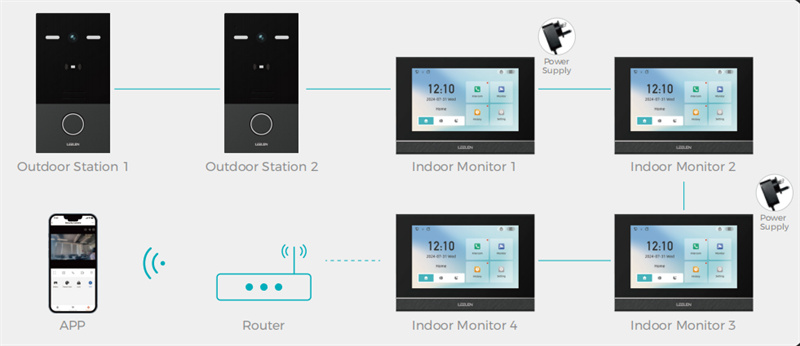HomeAssistant Intercom: Elevate Your Smart Home
Abstract:
Smart home technology is evolving, and the HomeAssistant intercom is at the forefront, blending seamless communication with robust automation. This article explores how a HomeAssistant intercom system enhances your home’s functionality, offering a peek into its tech, benefits, and setup. Ready to upgrade your entryway? Let’s dive in.

What Is a HomeAssistant Intercom?
Imagine a doorbell that doesn’t just ring but connects to your entire smart home. That’s the HomeAssistant intercom in a nutshell. Built on the open-source HomeAssistant platform, it’s a customizable solution that integrates video, audio, and smart controls. Whether you’re greeting guests or keeping an eye on deliveries, this system ties into your existing setup, making it a standout choice for tech-savvy homeowners who want more than a basic buzzer.
How Does the Technology Power It?
The HomeAssistant intercom system leans on a mix of hardware and software to shine. It typically pairs with a camera-equipped doorbell—like those from Ring or a DIY IP camera—linked through HomeAssistant’s software hub. From there, it uses Wi-Fi to stream live video and enable two-way talk via your phone or a wall-mounted tablet. What sets it apart? Its ability to sync with lights, locks, or even your thermostat, all managed through a single dashboard. It’s tech that adapts to you, not the other way around.
Why Choose a HomeAssistant Intercom System?
There’s a lot to love here. Security tops the list—you’ll know who’s at the door, whether you’re home or halfway across town. Convenience follows close behind; unlock the door or dim the porch lights without leaving the couch. The real kicker? Customization. With a HomeAssistant intercom, you can tweak notifications, automate responses, or integrate it with other devices. It’s a flexible, powerful addition that makes your home feel smarter and more connected.
Setting Up Your HomeAssistant Intercom
Getting started might sound daunting, but it’s more approachable than you’d think. First, you’ll need a HomeAssistant hub—either on a Raspberry Pi or a dedicated server. Pair it with a compatible intercom device, connect to your Wi-Fi, and configure it through the HomeAssistant interface. Want to add voice control? Link it to Alexa or Google Assistant. The beauty is in the tinkering—adjust settings to fit your routine, like muting alerts at night or triggering a “welcome home” scene. It’s hands-on but rewarding.

Tips for Getting the Most Out of It
To really make your HomeAssistant intercom system sing, think beyond the basics. Mount a tablet as a control panel for quick access. Set up motion sensors to trigger recordings or lights when someone approaches. Dive into the community forums for scripts that add flair, like custom chimes or visitor logs. The system’s open-source nature means it grows with your ideas—start simple, then build it into something uniquely yours.
Summary:
A HomeAssistant intercom isn’t just a doorbell—it’s a gateway to a smarter, more responsive home. With its blend of security, flexibility, and integration, this system offers a tailored experience that off-the-shelf options can’t match. Whether you’re new to smart homes or a seasoned enthusiast, a HomeAssistant intercom system brings your front door into the future.
FAQ
Q: What do I need to run a HomeAssistant intercom?
A: A HomeAssistant hub, a compatible camera or doorbell, and a stable Wi-Fi connection.
Q: Can it work with my existing smart devices?
A: Yes, it integrates with most popular brands via the HomeAssistant platform.
Q: Is setup hard for beginners?
A: It takes some effort, but guides and community support make it manageable.
Q: Does a HomeAssistant intercom system need a subscription?
A: No, it’s subscription-free, though some add-ons might have costs.
Q: Can I use it without internet?
A: Limited features work offline, but full functionality requires Wi-Fi.
